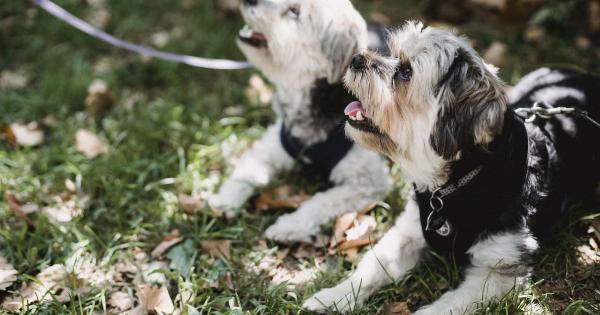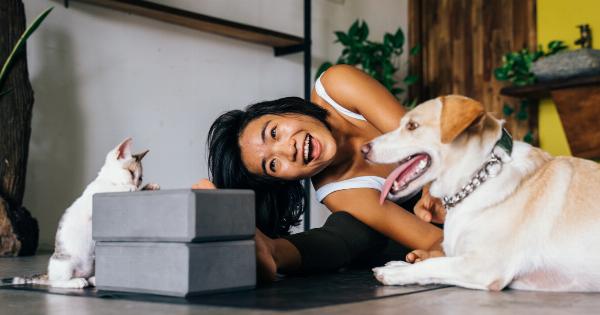Dealing with nervousness can be challenging for both humans and their canine companions. Whether it’s due to specific triggers or simply a natural disposition, anxiety can disrupt daily life and hinder overall well-being.
If you find yourself constantly on edge or notice that your furry friend is exhibiting signs of nervousness, there are methods you can implement to alleviate anxiety and create a calmer environment for both of you. In this article, we will explore strategies to tackle nervousness and promote a sense of ease in both you and your beloved canine.
Understanding Nervousness
Nervousness in humans and canines can stem from various causes, such as past traumatic experiences, genetic predispositions, or even medical conditions.
It often manifests through physical and behavioral symptoms, which may include restlessness, trembling, excessive barking, pacing, avoidance of certain situations, or even aggression.
In humans, nervousness is often associated with stress and may be accompanied by feelings of apprehension, tension, or unease.
Similarly, canines may exhibit signs of anxiety when faced with unfamiliar environments, loud noises, separation from their owners, or even certain individuals or animals.
Creating a Calming Environment
Both humans and canines benefit from a calm environment that promotes relaxation and minimizes stress triggers. Here are some techniques to help you create a soothing atmosphere:.
1. Establish a Routine
Establishing a consistent routine provides a sense of security for both you and your canine companion. Having a set schedule for meals, walks, and playtime can help reduce anxiety by providing a predictable environment.
2. Provide a Safe Space for Your Canine
Create a designated safe space for your canine, such as a cozy corner or a crate, where they can retreat when they feel nervous. Fill this area with their favorite toys, blankets, and bedding to make it a comforting and secure place.
3. Use Calming Scents
Aromatherapy can have a profound impact on nervousness in both humans and canines. Lavender and chamomile are known for their calming properties.
You can use essential oils or opt for specially designed pet-safe products to incorporate these scents into your daily routine.
4. Engage in Regular Exercise
Physical exercise is crucial for both you and your dog. Regular exercise releases endorphins, which can help reduce stress and anxiety.
Consider incorporating activities such as walks, jogs, or interactive play sessions to keep both of you active and stress-free.
5. Encourage Mental Stimulation
Mental stimulation is equally important for canines and humans. Engage your furry friend in puzzle toys, obedience training, or interactive games to keep their minds occupied and reduce anxiety.
Similarly, engage in activities such as reading, puzzles, or hobbies that stimulate your own cognitive abilities.
6. Practice Deep Breathing Exercises
Deep breathing exercises are effective in promoting relaxation and reducing nervousness in both humans and canines. By focusing on taking slow, deep breaths, you can help calm your body and mind.
Similarly, you can train your canine to practice deep breathing exercises with you, further enhancing the bond between you and reducing anxiety.
7. Seek Professional Training for Your Dog
If your canine’s nervousness becomes problematic or hinders their quality of life, it may be beneficial to seek professional training.
A qualified dog trainer or behaviorist can develop a personalized training plan to address your dog’s specific anxiety triggers and guide you in implementing effective techniques.
8. Practice Mindfulness
Mindfulness involves focusing on the present moment and accepting it without judgment. This practice can help both you and your canine become more attuned to your surroundings and reduce anxiety.
Incorporate mindfulness techniques, such as meditation or guided imagery, into your daily routine to promote an overall sense of calm.
9. Implement Positive Reinforcement
Positive reinforcement is a powerful tool in reducing nervousness and encouraging desired behaviors. Reward your canine with treats, praise, or play whenever they display calm and relaxed behavior.
Similarly, build a system of self-reward for yourself, acknowledging small victories and focusing on positive aspects of your own progress in managing your anxiety.
10. Seek Professional Help If Needed
If your own nervousness or your canine’s anxiety persists or worsens despite your best efforts, do not hesitate to seek professional help.
Mental health professionals can provide you with effective coping strategies, while veterinarians can assess your dog’s health and discuss potential medical interventions if necessary.
Final Thoughts
Dealing with nervousness in both humans and canines requires patience, understanding, and consistent effort.
By implementing the strategies mentioned above and tailoring them to your specific situations, you can create a calmer environment that promotes well-being and minimizes anxiety for both you and your furry companion. Remember to be gentle with yourself and your canine, celebrating small victories along the way. Together, you can overcome nervousness and create a happier, more peaceful life.

























